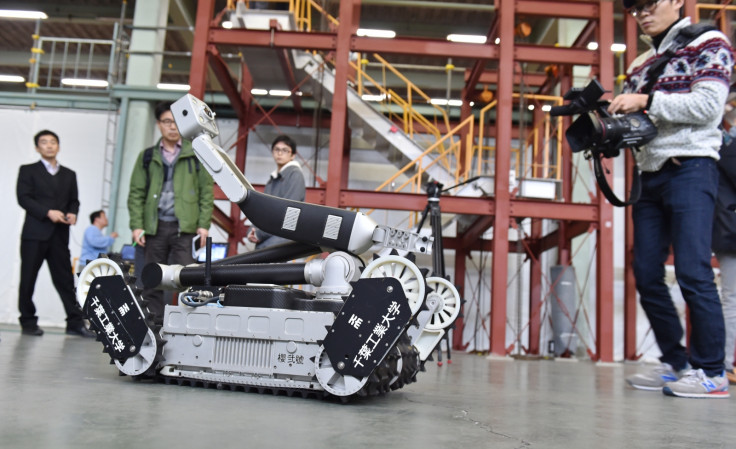Fukushima: Robot 'dies' 3 hours after entering Japan's radioactive reactor

Tokyo Electric Power Co (Tepco) has had to give up trying to recover a shape-shifting snake robot that was sent into the Fukushima Daiichi nuclear power plant on 10 April to access damage from the 2011 Tōhoku earthquake and tsunami disaster.
The Tōhoku earthquake and tsunami hit the Pacific coast of Japan in March 2011 and caused a major nuclear disaster at the Fukushima Daiichi nuclear power plant. Three of the six nuclear reactors suffered meltdowns, releasing almost 30% more radiation than the Chernobyl disaster in 1986.
The 60cm-long robot, developed by Hitachi and its affiliate, Hitachi-GE Nuclear Energy, was sent into one of the nuclear containment vessels at the No. 1 reactor at 9.25am on 10 April. It is the first robot to have ventured into the containment vessel since 2011.
Remotely controlled, the robot moves by crawling like a snake on tiny treads and can also transform to become a U-shaped vehicle moving backwards and forwards similar to a tank.
Just after 2pm on 10 April, operators lost control of the robot and had been trying to recover it over the weekend. By the time control was lost, the robot had already succeeded in examining 14 out of the 18 planned inspection spots.
Tepco has announced it will abandon its efforts and cut the cables connected to the robot on 13 April. Another robot had been scheduled to be sent into the reactor using a different access point on the same day but that has now been postponed.
Deploying robots to investigate radiation
The firm said sending the robot snake into the reactor was "an unprecedented experiment" that had enabled Tepco to obtain crucial data it needs to decommission the reactors. So far, 15 other robots have been successfully deployed to the Fukushima Daiichi reactors and all have been retrieved without any issue.

The robots include Packbot and Warrior, two military robots built by US firm iRobot that removed obstacles in the reactor buildings; Raccoon built by ATOX, which decontaminated the first floor of the reactor buildings and the Dry Ice Blast Decontamination robot built by Toshiba.
They also include MEISTeR, an absorption/blast decontamination robot built by Mitsubishi Heavy Industries; Sakura, an amphibious robot that investigates radiation and Rosemary, a robot that investigates sources of radiation, both built by the Chiba Institute of Technology Future Robotics Technology Center (fuRo) and Hitachi GE.
Concerns Japan isn't doing enough to curb nuclear fallout
There were 16,000 victims from the Tōhoku earthquake and although none of them perished from radiation exposure, there continue to be great health concerns about the effects of the nuclear fallout on people living in Fukushima Prefecture and surrounding areas close to the nuclear disaster.
In the four years since the disaster, Japan has allocated over $15bn (£10.3bn, ¥1.8tn) to reduce radiation levels around the plant but very few residents believe Tokyo's assurances that the site will be cleaned up and shut down after 30 years.
Many residents of Okuma, a village near the stricken Fukushima Daiichi plant, are angry about plans by the Japanese government to dump about 30 million tonnes of radioactive debris from the disaster in a huge waste complex on their doorstep.
Japanese government auditors also reported in March that Tepco had wasted more than a third of the ¥190bn ($1.6bn) in taxpayers' money allocated for cleaning up the plant by using shoddy equipment.
In December 2013, US researchers found babies born in California, 5,000 miles across the Pacific Ocean from Japan, were suffering from a significant excess of hypothyroidism. Meanwhile in Japan, scientists have developed the first whole body scanner to help measure radiation exposure in babies and children.
© Copyright IBTimes 2025. All rights reserved.






















